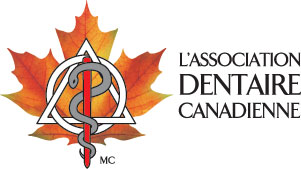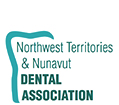L’Association dentaire canadienne (ADC) a compilé différentes informations importantes pour aider les dentistes formés à l’étranger (DFE ) à s’adapter au contexte d’exercice canadien. Ci-dessous figurent des thèmes clés pour vous aider dans votre cheminement.
Qui sommes-nous?
L’ADC est le porte-parole de la profession dentaire au Canada. Elle se consacre à la promotion d’une santé buccodentaire optimale, composante essentielle de la santé globale, ainsi qu’à l’avancement et au leadership d’une profession unifiée. L’ADC représente quelque 21 000 dentistes praticiens aux quatre coins du Canada.
Diffusion des connaissances
L’ADC recueille, organise et diffuse de l’information sur la santé buccodentaire et la profession dentaire par l’entremise de divers moyens, tels que :
- le site Web de l’ADC, notre point d’ancrage pour toutes nos nombreuses ressources et informations utiles
- le JCDA, notre Journal of the Canadian Dental Association
- L’essentiel de l’ADC, notre publication imprimée
- CDA Oasis, notre carrefour numérique
- Twitter, Facebook, Instagram et LinkedIn notre présence dans les médias sociaux
Efforts de sensibilisation
L’ADC intervient auprès du gouvernement fédéral dans des dossiers de politiques et de réglementation qui font avancer les soins buccodentaires et la profession dentaire. Les principaux outils de l’ADC pour défendre les intérêts de la population et de la profession comprennent les relations avec le gouvernement, les relations avec les médias et la sensibilisation du public.
Services d’aide à la pratique
L’ADC offre une gamme de services et de programmes pour aider les dentistes membres d’une association dentaire provinciale ou territoriale dans leur exercice quotidien.
Ce que l’ADC ne fait pas
À titre d’association professionnelle, l’ADC n’a rien à voir avec la réglementation de la profession ou de l’exercice de la médecine dentaire. Les dentistes sont assujettis au cadre réglementaire de l’organisme indépendant mandaté par leur gouvernement provincial ou territorial. Toutes les demandes portant sur des questions de réglementation doivent être adressées à ces organismes, dont la liste se trouve ici.
À quoi ressemble une équipe dentaire au Canada?
Au Canada, les soins buccodentaires sont offerts par des personnes issues d’une série d’horizons professionnels. Certaines font partie de l’équipe qui prend en charge les patients dans un cabinet dentaire. Chaque membre de cette équipe joue un rôle particulier pour veiller à ce que les patients reçoivent les soins buccodentaires les plus complets possibles. Ci-dessous figure une description générale des divers membres de l’équipe dentaire. Veuillez noter que ces rôles peuvent varier d’une province ou d’un territoire à l’autre.
Assistante dentaire ou assistant dentaire
Il s’agit du membre de l’équipe qui prépare les patients à recevoir un traitement, qui stérilise les instruments, qui assiste le dentiste et qui aide à garder la bouche sèche durant les interventions. Dans certaines provinces, cette personne peut également prendre des radiographies et des empreintes dentaires, polir les dents et appliquer du fluorure.
Hygiéniste dentaire
L’hygiéniste dentaire a une autorisation professionnelle et une formation pour nettoyer les dents et montrer aux patients comment s’occuper de leurs dents. L’hygiéniste dentaire peut aussi prendre des radiographies et des empreintes dentaires ainsi que polir les dents et appliquer du fluorure. Dans certaines régions, l’hygiéniste peut également faire une évaluation de l’état de santé buccodentaire.
Technologue dentaire, technicienne dentaire ou technicien dentaire
La ou le technologue dentaire, la technicienne dentaire ou le technicien dentaire fabrique divers appareils, tels que des appareils d’orthodontie, des prothèses dentaires complètes ou partielles, des couronnes et des ponts. Cette personne peut aussi s’occuper de réparer un implant ou de confectionner une attelle ou une gouttière.
Dentothérapeute
Dans certaines régions, la ou le dentothérapeute travaille sous la supervision d’une ou d’un dentiste pour effectuer des traitements de restauration de base et des extractions simples.
Réceptionniste et personnel de bureau
La ou le réceptionniste établit l’horaire de l’équipe dentaire et veille au bon fonctionnement du cabinet. Cette personne est d’habitude le premier point de contact des patients et elle fournit des informations générales sur les rendez-vous et la facturation.
Liens et ressources utiles
Association dentaire canadienne : Feuillet d’information sur votre équipe de soins dentaires
Options de carrière en médecine dentaire
Le secteur de la médecine dentaire au Canada offre de nombreuses perspectives de carrière. Pour cette raison, nous avons créé un site Web, Options de carrière en médecine dentaire, qui présente toutes ces possibilités. Pour chaque perspective de carrière, il fournit une définition, les avantages et les inconvénients, des questions et des réponses, ainsi que des liens vers d’autres ressources utiles.
Autres ressources utiles
Il est important d’avoir toute l’information nécessaire pour pouvoir faire des choix éclairés qui mèneront à une carrière florissante en médecine dentaire au Canada. Vous trouverez ci-dessous des ressources utiles sur l’établissement, l’intégration, la langue et plus encore.
Découvrez comment obtenir une certification pour exercer la médecine dentaire au Canada.
Démarche à suivre pour devenir dentiste au Canada – Bureau national d’examen dentaire du Canada
Obtenez de l’aide pour apprendre les deux langues officielles du Canada.
Cours de langue financés par le gouvernement du Canada – Gouvernement du Canada
Ressources pour les nouveaux arrivants au Canada.
Trouvez des services gratuits près de chez vous – Gouvernement du Canada
Apprenez-en davantage sur la vie au Canada.
Outil Vivre au Canada – Gouvernement du Canada
Accédez au Centre d’information pour les nouveaux arrivants du YMCA.
Services d’établissement pour les francophones – YMCA Canada











